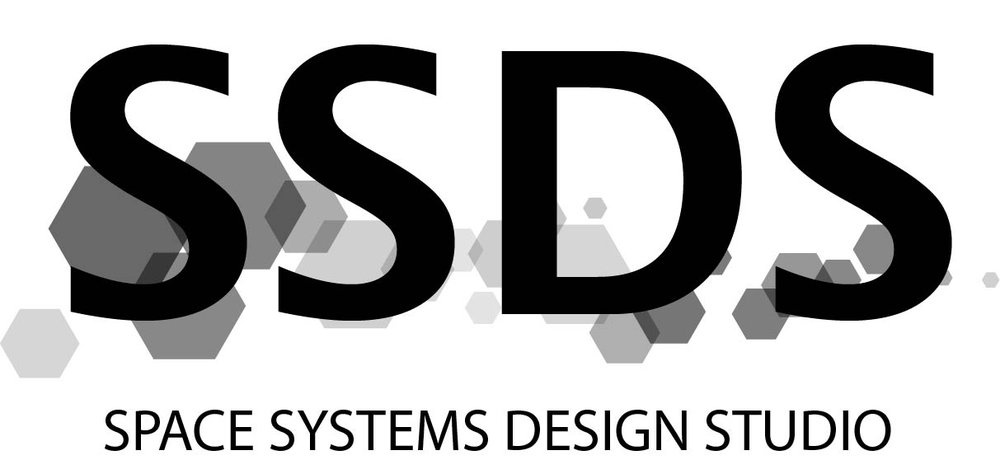Flux-Pinning Applications
Flux pinning has many potential applications on spacecraft. Listed below are a few close-range spacecraft concepts.
A cryo-cooled YBCO disk on a grappler arm establishes flux pinning with one of several arrays of permanent magnets on a spacecraft.
Non-Contacting Pointing Platforms
One of the most broadly applicable features of FPI technology is its ability to provide stiff, alterable connection between satellites on orbit. One can connect a payload segment of a spacecraft to its bus via an FPI, providing a unique non-contacting method of vibration isolation and six-degree-of-freedom pointing. FPIs can provide up to six degrees of freedom while enabling spacecraft operators to tune the stiffness of the connection in order to control the natural frequency of the system - a capability not seen in standard Stewart platform technology.
Modular Spacecraft and Formation Flying
FPIs can also be used to provide stiff non-contacting connections between different modules in modular spacecraft and formation flying scenarios. The well-known advantages of a modular spacecraft system include the ability to quickly and autonomously repair broken subsystems, upgrade payloads, and refuel on-orbit. If these subsystem modules are connected to one another via an FPI, the collection of modules can maintain close, passively stable relative distances (on the order of centimeters to a meter) that are not offered by most current formation flying technologies.
Autonomous Assembly and Virtual Structures
In more forward-looking applications, the properties of FPI connections may also assist in the autonomous assembly of large-scale space structures. Due to limitations in launch fairings, many advanced space systems currently perform advanced deployment sequences in space or require direct human manipulation to assemble. Flux pinning can provide stiffness capable of supporting large, non-contacting space structures in the presence of perturbations. These scalable structures may attract and self-assemble new components.
One particular formation of interest is the concept of a large aperture flux-pinned space telescope. Flux pinning represents an attractive solution to management of the relative motion of the individual spacecraft by offering a non-contacting, modular, reconfigurable, and passively stable connection.
Rendezvous and Docking Augmentation
Rendezvous and docking is a natural application for FPI technology. Once in two vehicles are in close proximity the FPI augmentation provides benefits at each point in the rendezvous sequence. The FPI has the capability to correct misalignments without requiring any feedback control, maintain a pre-selected safe distance between the modules, and provide impact attenuation forces if the modules move closer than that equilibrium. Once at an equilibrium point, electromagnets can alter the magnetic field in the FPI in order to successfully soft-dock in a controlled and passively-stable manner.
Cooperative Grapplers
The same characteristics that make an FPI useful in a rendezvous sequence also make it ideal for grappling cooperative spacecraft. Provided that the object being manipulated is outfitted with a magnetic field connector, the superconductors on the grappling hand can manipulate a target without needing to contact it. This approach to grappling avoids subjecting the target to contact loading or other disturbances. In its simplest iteration, the target spacecraft only needs to include a ring of permanent magnets on its surface at a hard point- which requires no electronics integration and only basic mechanical integration.
On-Orbit Reconfiguration with Non-Contacting Mechanisms
On-orbit reconfiguration allows a satellite to take on a different geometry to accommodate changing mission requirements. FPIs enable non-contacting close-proximity satellites to reconfigure relative to one another by controlling the stiffness in each degree of freedom. A system can toggle the number and type of kinematic constraints by energizing or moving electromagnets to manipulate the magnetic field's symmetry. Thus, if connected by an FPI with a changeable magnetic field, a non-contacting hinge can easily be converted into a fixed connection or cylindrical joint. Structures can be set up to evolve into desirable configurations based on these constraints and the potential energy wells in the system, leading to a novel approach to spacecraft reconfiguration.
Flux-Pinned Solar Sail Concepts
In more futuristic low-TRL concepts, FPIs at a small scale may enable new designs for solar sail propulsion. Traditional solar sail architectures involve large ultra-thin reflective membranes stretched across lightweight structural elements, which are primarily designed to support a large surface area with minimal mass dedicated to infrastructure. FPIs provide an alternative fractionated solar sail design in which the sail itself is composed of small discrete particles held in place by superconductive flux-pinning forces.








